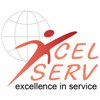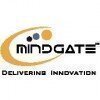
Filter interviews by
NTT Global Data Centers and Cloud Infrastructure Interview Questions and Answers
25 Interview questions
Accounts Receivable (AR) process involves managing incoming payments and maintaining financial records efficiently.
Invoicing: Generate and send invoices to customers promptly after service delivery.
Payment Processing: Accept various payment methods (credit cards, ACH transfers) for customer convenience.
Collections: Follow up on overdue accounts through reminders and collection strategies.
Reconciliation: Regularly ...
Data center operations involve managing and maintaining the infrastructure that supports data storage, processing, and networking.
Infrastructure Management: Ensuring servers, storage, and networking equipment are operational.
Monitoring: Using tools to track performance metrics and detect issues in real-time.
Security: Implementing physical and cybersecurity measures to protect data and equipment.
Capacity Planning: ...
Data centers require various electrical equipment for power distribution, cooling, and backup systems to ensure reliable operations.
Uninterruptible Power Supply (UPS) - Provides backup power during outages.
Power Distribution Units (PDUs) - Distributes electrical power to servers and equipment.
Generators - Backup power sources for extended outages.
Cooling Systems - Essential for maintaining optimal temperatures, e....
Electrical infrastructure refers to the network of components that deliver and manage electrical power.
Includes power generation facilities like power plants (e.g., coal, solar, wind).
Encompasses transmission lines that transport electricity over long distances.
Involves substations that step down voltage for distribution.
Consists of distribution networks that deliver electricity to homes and businesses.
Incorporate...
A PDU (Power Distribution Unit) is essential for distributing electrical power to servers and equipment in a data center.
Power Distribution: PDUs distribute electrical power from a single source to multiple devices, ensuring efficient power management.
Monitoring Capabilities: Many PDUs come with monitoring features that track power usage, helping to optimize energy consumption.
Redundancy: Some PDUs offer redundanc...
Electrical engineers in data centers ensure reliable power distribution, equipment efficiency, and system safety.
Design and implement power distribution systems to ensure reliable electricity supply.
Oversee the installation and maintenance of backup power systems, such as UPS and generators.
Monitor and optimize energy consumption to improve efficiency and reduce costs.
Ensure compliance with safety standards and re...
VMware vSphere HA is a feature that provides high availability for virtual machines by automatically restarting them on other hosts in a cluster.
Monitors virtual machines and hosts for failures.
Automatically restarts VMs on available hosts in case of a host failure.
Works in conjunction with VMware DRS for optimal resource allocation.
Can be configured to send alerts and notifications during failures.
Example: If a h...
VMware snapshots capture the state of a VM at a specific point in time, allowing for easy recovery and testing.
Snapshots preserve the VM's disk state, memory, and settings at the time of creation.
They allow for quick rollback to a previous state, useful for testing updates or configurations.
Multiple snapshots can be taken, but excessive use can lead to performance degradation.
Example: Before upgrading an applicati...
I manage clients through effective communication, understanding their needs, and providing tailored solutions to ensure satisfaction.
Establish clear communication channels: Regular updates and check-ins to keep clients informed.
Understand client needs: Conduct surveys or meetings to gather feedback and tailor services accordingly.
Set realistic expectations: Clearly outline project timelines and deliverables to avo...
SSL and TLS handshaking is the process of establishing a secure connection between a client and a server.
SSL/TLS handshake involves multiple steps such as client hello, server hello, key exchange, authentication, and cipher suite negotiation.
During the handshake, the client and server exchange cryptographic keys and agree on the encryption algorithm to be used for secure communication.
SSL/TLS handshake ensures tha...
NTT Global Data Centers and Cloud Infrastructure Interview Experiences
25 interviews found
I applied via Naukri.com and was interviewed in Sep 2024. There were 3 interview rounds.
(1 Question)
- Q1. How to manage client
- Ans.
I manage clients through effective communication, understanding their needs, and providing tailored solutions to ensure satisfaction.
Establish clear communication channels: Regular updates and check-ins to keep clients informed.
Understand client needs: Conduct surveys or meetings to gather feedback and tailor services accordingly.
Set realistic expectations: Clearly outline project timelines and deliverables to avoid mi...
(1 Question)
- Q1. Strength and weakness
(1 Question)
- Q1. Cooling technologies
I appeared for an interview in Mar 2025, where I was asked the following questions.
- Q1. What is VMware vsphere HA
- Ans.
VMware vSphere HA is a feature that provides high availability for virtual machines by automatically restarting them on other hosts in a cluster.
Monitors virtual machines and hosts for failures.
Automatically restarts VMs on available hosts in case of a host failure.
Works in conjunction with VMware DRS for optimal resource allocation.
Can be configured to send alerts and notifications during failures.
Example: If a host r...
- Q2. How it's works shanpshot
- Ans.
VMware snapshots capture the state of a VM at a specific point in time, allowing for easy recovery and testing.
Snapshots preserve the VM's disk state, memory, and settings at the time of creation.
They allow for quick rollback to a previous state, useful for testing updates or configurations.
Multiple snapshots can be taken, but excessive use can lead to performance degradation.
Example: Before upgrading an application, a...
- Q3. Can you tell me DRS
- Ans.
DRS (Distributed Resource Scheduler) optimizes resource allocation in VMware environments for efficient workload management.
Automatically balances workloads across hosts in a cluster.
Utilizes resource pools to manage resources effectively.
Can be configured for fully automated, partially automated, or manual modes.
Example: If one host is overloaded, DRS can migrate VMs to a less utilized host using vMotion.
Monitors reso...
Senior Information Security Analyst Interview Questions & Answers
posted on 2 Apr 2024
(5 Questions)
- Q1. F5 WAF AWS Cloud
- Q2. What are the templates use in F5
- Ans.
Templates used in F5 are pre-defined configurations that can be applied to various components for consistent settings.
F5 provides templates for configuring virtual servers, pools, iRules, and more
Templates help ensure consistent and secure configurations across devices
Users can create custom templates or use pre-built templates provided by F5
Templates can simplify the deployment and management of F5 devices
- Q3. How to upgrade F5
- Ans.
To upgrade F5, you need to download the new software version, back up the configuration, install the new version, and verify the upgrade.
Download the new software version from the F5 website
Back up the current configuration to ensure you can revert back if needed
Install the new software version following the upgrade instructions provided by F5
Verify the upgrade by testing the functionality of the F5 device
- Q4. What is Fundamental Policy
- Ans.
Fundamental policy is a set of basic rules and guidelines that form the foundation of an organization's security practices.
Fundamental policy outlines the core principles and objectives of information security within an organization.
It serves as a framework for decision-making and helps ensure consistency in security practices.
Examples of fundamental policies include access control policies, data classification policie...
- Q5. What is SSL and TLS handsheking
- Ans.
SSL and TLS handshaking is the process of establishing a secure connection between a client and a server.
SSL/TLS handshake involves multiple steps such as client hello, server hello, key exchange, authentication, and cipher suite negotiation.
During the handshake, the client and server exchange cryptographic keys and agree on the encryption algorithm to be used for secure communication.
SSL/TLS handshake ensures that the...
Interview Preparation Tips
Skills evaluated in this interview
I applied via Naukri.com
(1 Question)
- Q1. I was asked about my projects and was asked to explained the application architecture. Based on my answer interviewer asked design related questions.
(1 Question)
- Q1. I was asked about my current roles and responsibilities. There were few star based questions on team management
(1 Question)
- Q1. Salary discussion
I appeared for an interview in Oct 2024, where I was asked the following questions.
- Q1. What do electrical engineers do in data centers?
- Ans.
Electrical engineers in data centers ensure reliable power distribution, equipment efficiency, and system safety.
Design and implement power distribution systems to ensure reliable electricity supply.
Oversee the installation and maintenance of backup power systems, such as UPS and generators.
Monitor and optimize energy consumption to improve efficiency and reduce costs.
Ensure compliance with safety standards and regulat...
- Q2. What are the electrical equipment for the data center?
- Ans.
Data centers require various electrical equipment for power distribution, cooling, and backup systems to ensure reliable operations.
Uninterruptible Power Supply (UPS) - Provides backup power during outages.
Power Distribution Units (PDUs) - Distributes electrical power to servers and equipment.
Generators - Backup power sources for extended outages.
Cooling Systems - Essential for maintaining optimal temperatures, e.g., C...
- Q3. What is PDU in a data center?
- Ans.
A PDU (Power Distribution Unit) is essential for distributing electrical power to servers and equipment in a data center.
Power Distribution: PDUs distribute electrical power from a single source to multiple devices, ensuring efficient power management.
Monitoring Capabilities: Many PDUs come with monitoring features that track power usage, helping to optimize energy consumption.
Redundancy: Some PDUs offer redundancy opt...
- Q4. What is an electrical infrastructure?
- Ans.
Electrical infrastructure refers to the network of components that deliver and manage electrical power.
Includes power generation facilities like power plants (e.g., coal, solar, wind).
Encompasses transmission lines that transport electricity over long distances.
Involves substations that step down voltage for distribution.
Consists of distribution networks that deliver electricity to homes and businesses.
Incorporates saf...
- Q5. What is data center operations?
- Ans.
Data center operations involve managing and maintaining the infrastructure that supports data storage, processing, and networking.
Infrastructure Management: Ensuring servers, storage, and networking equipment are operational.
Monitoring: Using tools to track performance metrics and detect issues in real-time.
Security: Implementing physical and cybersecurity measures to protect data and equipment.
Capacity Planning: Analy...
I appeared for an interview in Oct 2024, where I was asked the following questions.
- Q1. Boot process Patching
- Q2. Ansibel lvm Usermangemt
I applied via Approached by Company and was interviewed in Dec 2023. There was 1 interview round.
(2 Questions)
- Q1. Why you're looking for job change?
- Q2. What is your expectations?
Interview Preparation Tips
I applied via LinkedIn and was interviewed in Jun 2024. There was 1 interview round.
Data collection of task assigned to the candidate
I appeared for an interview in Jun 2024, where I was asked the following questions.
- Q1. Knowledge about collection process
- Q2. Comfortable with client visit
- Ans.
I am very comfortable with client visits, as they foster strong relationships and provide valuable insights into client needs.
I prioritize building rapport with clients through face-to-face interactions.
During my last role, I visited clients regularly to understand their challenges and gather feedback.
I believe in active listening during visits to ensure clients feel heard and valued.
I prepare thoroughly for each visit...
I appeared for an interview in May 2024, where I was asked the following questions.
- Q1. Knowledge about AR process?
- Ans.
Accounts Receivable (AR) process involves managing incoming payments and maintaining financial records efficiently.
Invoicing: Generate and send invoices to customers promptly after service delivery.
Payment Processing: Accept various payment methods (credit cards, ACH transfers) for customer convenience.
Collections: Follow up on overdue accounts through reminders and collection strategies.
Reconciliation: Regularly recon...
- Q2. System knowledge
Top trending discussions






NTT Global Data Centers and Cloud Infrastructure Interview FAQs
The duration of NTT Global Data Centers and Cloud Infrastructure interview process can vary, but typically it takes about less than 2 weeks to complete.
Tell us how to improve this page.
NTT Global Data Centers and Cloud Infrastructure Interviews By Designations
- NTT Global Data Centers and Cloud Infrastructure Server Administrator Interview Questions
- NTT Global Data Centers and Cloud Infrastructure Data Center Operator Interview Questions
- NTT Global Data Centers and Cloud Infrastructure Senior Software Engineer Interview Questions
- NTT Global Data Centers and Cloud Infrastructure Engineering Manager Interview Questions
- NTT Global Data Centers and Cloud Infrastructure IT Engineer Interview Questions
- NTT Global Data Centers and Cloud Infrastructure Network Engineer Interview Questions
- NTT Global Data Centers and Cloud Infrastructure Client Relationship Manager Interview Questions
- NTT Global Data Centers and Cloud Infrastructure Linux System Administrator Interview Questions
- Show more
Interview Questions for Popular Designations
Overall Interview Experience Rating
based on 32 interview experiences
Difficulty level
Duration
Interview Questions from Similar Companies
NTT Global Data Centers and Cloud Infrastructure Reviews and Ratings
based on 300 reviews
Rating in categories
5-9 Yrs
Not Disclosed
|
Network Engineer
73
salaries
| ₹2.8 L/yr - ₹6.9 L/yr |
|
Ms Engineer
58
salaries
| ₹2.8 L/yr - ₹5.5 L/yr |
|
Senior Engineer
46
salaries
| ₹5.6 L/yr - ₹12.9 L/yr |
|
Assistant Manager
36
salaries
| ₹8.5 L/yr - ₹14.4 L/yr |
|
Technical Specialist
27
salaries
| ₹13.1 L/yr - ₹25.3 L/yr |

Tekwissen

Softenger

XcelServ Solutions

Capital Numbers Infotech
- Home >
- Interviews >
- NTT Global Data Centers and Cloud Infrastructure Interview Questions
















